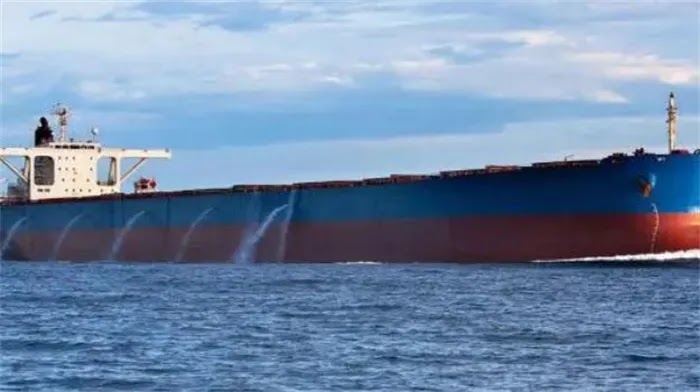Why Do The Two Sides Of A Sailing Ship Keep Draining Outward?
Why do the two sides of a sailing ship keep draining outward? Could it be that the bottom of the boat is leaking?
Why are the countless drainage holes on both sides of the ship always draining water, and what is their function? This actually has a lot to do with the structure of the ship.
Large ships built in ancient times actually had similar water holes. They had three main functions. One was to drain water to maintain the balance of the hull; the other was to slow down the sinking speed of the hull when the cabin was damaged; the third was to drain water during normal times. An outlet for the discharge of domestic sewage by the crew.
This hole is still retained in modern giant ships, because these drainage holes are connected to the bilge of the ship, and a large amount of ballast water needs to be poured into the bilge before the ship goes to sea. Simply put, when the ship is empty, the ship will float because of its lightweight. At this time, more water needs to be added to the bottom of the cabin to increase the counterweight and ensure smooth sailing. Especially in the sea or weather with strong wind and waves, it is especially necessary to fill with ballast water.
And when the weather is fine and the ship needs to move forward at high speed, the ballast water needs to be discharged. At this time, it is also necessary to maintain the balance of the ship, so the bottom of the cabin has a compartment structure when it is designed. The compartment divides the bilge into a dozen or twenty small compartments, and there is a small hole between each other, which makes the exchange of water between the compartments slower.
This is to prevent the water flow at the bottom of the cabin from quickly shifting when the ship is bumpy and causing the ship to roll over. When draining water, it can also have a balancing effect by draining water on both sides at the same time. When the bilge hits a reef and is damaged and leaks, the existence of the compartment can also slow down the water intake of the ship and buy time for rescue.
In addition, some drainage holes are not actually connected to the bilge, but connected to the main engine room. Its main function is to discharge cooling water.
This is because giant ships often use heavy-duty gas turbines to operate. Although the power is very powerful, the operation of the machine also generates a lot of heat. Once the heat is difficult to dissipate, it may cause damage to the main engine.
Generally speaking, giant gas turbines need to go through 72 hours of continuous operation testing. During this process, nearly 30%-40% of the heat is dissipated to the outside through components such as the cylinder, cylinder head, and piston. If 25%-35% of the heat is not dissipated in time, it will cause the machine to become too hot. High and unable to function properly.
Therefore, for the ship to be able to travel for a long time, it is necessary to install a cooling system to dissipate heat from the main engine. The cooling system is not enough, and coolant must be prepared. So people choose to use cold water to cool the host. This is because water is easier to obtain and the cost is low. The cooling water is often discharged to the sea through drainage holes.
In the past, people used the open cooling method to cool the host, that is, directly using seawater or river water to enter the cooler and the host. However, due to poor water quality and the corrosive effect of chloride in seawater, it is easy for the cooling system to absorb various impurities and floating oil, causing pipeline blockage or adhering to the cooling surface, affecting the heat transfer effect.
To avoid these problems, in addition to the closed cooling system of people's mailboxes, which means avoiding direct contact between seawater and the host, the main method is to add a heat exchanger to the cooling system. The function of the heat exchanger is actually to absorb the heat from the host and then transfer the heat to the seawater. In the natural state, the speed of heat propagation is relatively slow, and the heat exchanger can increase the cooling speed by adding coolant, pressurizer, etc.
It can be said that the power of a giant ship is not only determined by the quality of the gas turbine but also affected by the heat exchanger. Therefore, to improve the power and endurance of the ship, it is very important to choose a good heat exchanger.
In the field of heat exchangers, Nanjing Yire Zonglian Energy Saving Technology Co., Ltd. can definitely be regarded as an industry leader. Their main products include high-temperature and high-efficiency gas plate heat exchangers, gas radiant heat exchangers with a temperature resistance of 1400°C, new Hot blast stoves, high-temperature and high-pressure gas-gas combined heat exchangers, high-efficiency and energy-saving waste gas incineration system and flame arrester, etc.
Their company's equipment occupies a small area, makes full use of the heat exchanger structure, greatly improves heat exchange efficiency, has mature manufacturing technology, short production cycle, is safe and reliable, and is suitable for various high-temperature working conditions.
The product quality of Nanjing Yire Zonglian Energy Saving Technology Co., Ltd. is absolutely excellent. It is one of the suppliers of large state-owned enterprises such as Baosteel, Jilin Chemical, Sinopec, PetroChina, Everbright, etc. In years of market inspection, Yire Zonglian has established its reputation in exchange for Heater energy conservation and environmental protection status.






Comments
Post a Comment